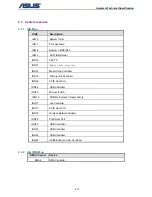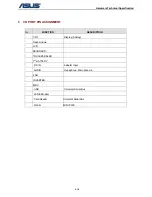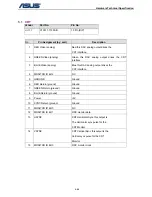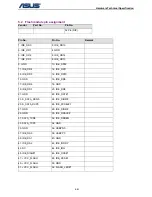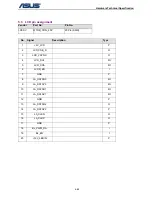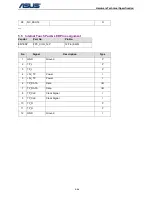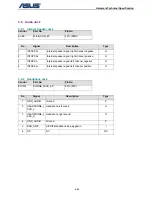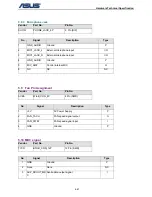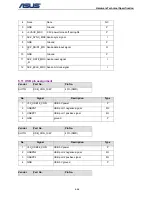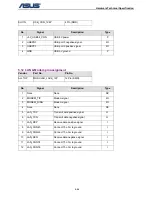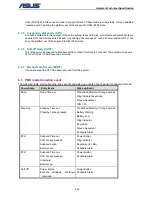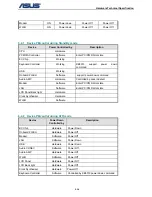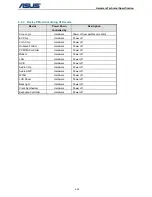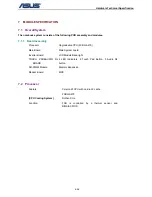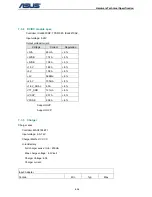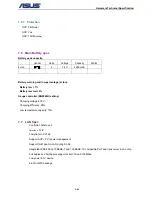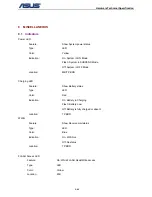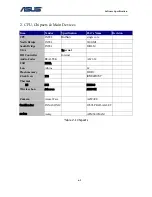
Hardware Technical Specification
5-31
6 POWER
MANAGEMENT
6.1 System power plane
Power Group
Power Control
Pin
Controlled Devices
+12V VSUS_ON
Other
Control
+5V
SUSB_ON
LCD, Flash, Flash & Wlan LED, Fan, Camera, Codec,
Audio, SB
+3V
SUSB_ON
NB IO, SB, LCD, Card reader, Codec, Audio
+1.8V_DUAL SUSC_ON
NB, DDR2 power
+5VSB VSUS_ON
SB,
USB,
Charge & Power LED
+3VSB
VSUS_ON
SB, Audio, Clock Generator, PCIE interface
+1.5V
SB Core, NB Core
+2.5V
SB Core, NB Core, Onboard VGA
+VTT_DDR
DDR2
Power
VCORE H_CPURST#
CPU
power
+3VA
LCD, EC, BIOS, Keyboard
+VCC_RTC
ICH6-M(RTC)
+VCCP
CPU_VRON
CPU power, SB Core, NB Core
6.2 Power management mode
6.2.1 Full-On
mode
All system devices are not power managed and the system can respond to applications with maximum
performance.
6.2.2 Doze
mode
The CPU clock is slow down but all other devices are full on.
6.2.3 Stand by mode
A suspend state where all motherboard components are still powered-on except for the system clock
generator device. The PCI and CPU buses are driven to the inactive idle state. The system memory is
powered and refreshed by the memory bridge, and the graphics frame buffer is powered and refreshed
by the graphic chip. The system provides a 32KHz clock (SUSCLK) in this suspend mode to support
refresh of these memory subsystems. Only an enabled “resume event” can bring the system out of the
stand by state. The south bridge also provides a resume timer that allows the system to resume after a
programmed time has elapsed.
6.2.4 Suspend to RAM mode (STR)
A suspend state where all motherboard components are powered-off. The CPU and PCI busses are
powered off. All devices connected to the CPU and PCI busses must either be powered-off or isolate
their bus interfaces. The system memory is powered and refreshed by the memory bridge, and the
graphics frame buffer is powered and refreshed by the graphics chip. The system provides a 32 kHz

